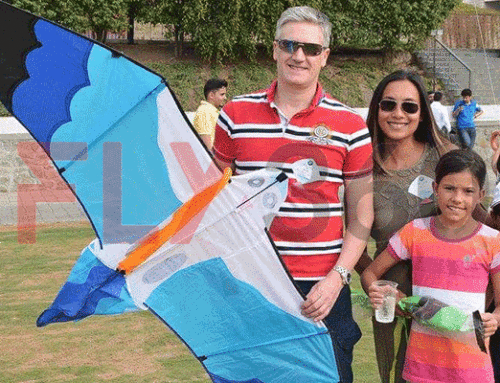Kite flying has been a popular pastime for centuries, enjoyed by people of all ages around the world. Beyond its recreational appeal, the art of kite flying also offers a fascinating insight into the world of physics. In this comprehensive guide, we’ll explore the forces involved in kite flying, the role of wind in flight stability, and the various design elements that contribute to a successful flight. So, let’s dive into the captivating world of kite flying physics!
1. The Four Fundamental Forces of Kite Flying
There are four primary forces acting upon a kite during flight: lift, drag, weight, and tension. Understanding these forces is essential for a stable and enjoyable kite flying experience.
1.1 Lift
Lift is the upward force that counteracts the kite’s weight and allows it to stay airborne. Generated by the wind flowing over the kite’s surface, lift is largely dependent on the angle of attack (the angle between the kite’s surface and the wind direction) and the kite’s design.
1.2 Drag
Drag is the force that opposes the kite’s motion through the air. It’s primarily caused by air resistance and depends on factors such as the kite’s shape, size, and the air’s viscosity. Minimizing drag is crucial for maintaining stable flight and maximizing the kite’s speed.
1.3 Weight
Weight is the downward force exerted on the kite due to gravity. It’s determined by the kite’s mass and the strength of the Earth’s gravitational pull. To achieve stable flight, a kite’s lift must overcome its weight.
1.4 Tension
Tension is the force exerted on the kite line, which keeps the kite tethered and helps maintain its position in the sky. It’s a result of the other three forces (lift, drag, and weight) and the angle at which the line is held. Proper line tension is vital for controlling the kite’s altitude and direction.
2. The Role of Wind in Kite Flying
Wind plays a crucial role in kite flying, as it provides the energy needed to generate lift and maintain flight. However, the wind’s strength and consistency can significantly impact a kite’s performance.
2.1 Wind Speed
Kite flying requires a specific range of wind speeds to ensure stable flight. Too little wind will not generate sufficient lift, while too much wind can cause the kite to become uncontrollable or even damage it. Typically, kites perform best in wind speeds ranging from 5 to 25 miles per hour (8 to 40 kilometers per hour).
2.2 Wind Consistency
Consistent wind is also essential for a successful kite flying experience. Gusty or turbulent winds can cause erratic flight behavior and make it challenging to control the kite. Smooth, laminar airflow is ideal for achieving stable flight and easy control.
2.3 Wind Direction
The direction of the wind can also impact kite flying. Ideally, the wind should be blowing from a single, consistent direction. This allows for easier control of the kite and minimizes the risk of sudden changes in wind direction causing instability.
3. Kite Design: Materials, Shapes, and Structures
Kite design plays a significant role in determining a kite’s flight characteristics, with various materials, shapes, and structures affecting its performance.
3.1 Materials
The choice of materials can greatly influence a kite’s weight, strength, and durability. Common materials used in kite construction include:
- Fabric: Lightweight fabrics, such as nylon or polyester, are often used for the kite’s sail to minimize weight and maximize lift.
- Frames: Rigid materials, like wood, plastic, or carbon fiber, are used to create the kite’s frame, providing structure and support.
- Lines: Kite lines are typically made from strong, lightweight materials like nylon or polyester to withstand tension and resist wear.
3.2 Shapes
Kite shapes vary widely, with each design offering unique flight characteristics. Some popular kite shapes include:
- Diamond: Diamond-shaped kites are the classic, traditional design, with a simple structure and easy-to-achieve stability.
- Delta: Delta kites are triangular and offer excellent lift and stability, making them popular for recreational kite flying.
- Box: Box kites have a more complex, three-dimensional structure, providing increased lift and stability in a variety of wind conditions.
3.3 Structures
The structure of a kite, including its frame and sail, can also impact its flight performance. Key structural elements to consider include:
- Spars: These are the rigid supports that make up the kite’s frame. The arrangement and number of spars can influence the kite’s rigidity, weight, and overall flight characteristics.
- Bridle: The bridle is the system of lines that connects the kite to the main flying line. Adjusting the bridle’s attachment points can alter the kite’s angle of attack and, in turn, its flight behavior.
- Tail: A tail is an optional accessory that can help stabilize the kite by increasing drag and counteracting erratic movements.
4. The Science of Kite Stability
Kite stability is a critical factor in successful kite flying. A stable kite remains upright and maintains a consistent flight path, making it easier to control. Stability is influenced by various factors, including the kite’s center of gravity, center of pressure, and dihedral angle.
4.1 Center of Gravity
The center of gravity is the point at which a kite’s weight is evenly distributed. A lower center of gravity contributes to increased stability, as it helps maintain the kite’s upright orientation.
4.2 Center of Pressure
The center of pressure is the point at which the lift and drag forces acting on the kite are balanced. Ideally, the center of pressure should be located slightly below the center of gravity, as this helps maintain stability by preventing the kite from rotating uncontrollably.
4.3 Dihedral Angle
The dihedral angle refers to the upward angle of a kite’s wings relative to its horizontal axis. A positive dihedral angle contributes to stability by providing a self-righting effect when the kite tilts to one side or the other.
5. Launching Techniques
Launching a kite can be a challenging but essential skill for kite flyers. There are several techniques for getting a kite into the air, with the choice of method depending on factors such as wind conditions, kite design, and personal preference.
5.1 Self-Launch
The self-launch technique involves positioning the kite on the ground with its nose facing into the wind. Holding the kite line, the flyer backs away from the kite, allowing the wind to catch the kite’s sail and lift it into the air.
5.2 Assisted Launch
The assisted launch technique requires a second person (the helper) to hold the kite while the flyer backs away with the kite line. When the flyer is ready, the helper releases the kite into the wind, allowing it to lift off and become airborne.
5.3 Running Launch
The running launch technique involves the flyer holding the kite while running into the wind. As the wind catches the kite’s sail, the flyer releases the kite, allowing it to lift into the air.
6. Kite Control and Maneuvering
Once a kite is airborne, controlling and maneuvering it is key to a successful flight. This involves managing line tension, adjusting the bridle, and using various techniques to change the kite’s direction and altitude.
6.1 Line Tension
Maintaining the proper line tension is essential for controlling a kite’s altitude and direction. Too much tension can cause the kite to climb too high or become unstable, while too little tension can result in the kite losing altitude or becoming unresponsive to control inputs.
6.2 Bridle Adjustments
Adjusting the bridle can alter the kite’s angle of attack, allowing for changes in flight behavior. Moving the bridle attachment point closer to the kite’s nose increases the angle of attack, generating more lift and potentially causing the kite to climb. Conversely, moving the attachment point away from the nose decreases the angle of attack, reducing lift and potentially causing the kite to descend.
6.3 Maneuvering Techniques
Maneuvering a kite involves using line tension and bridle adjustments to change the kite’s direction and altitude. Some common techniques include:
- Pull Turns: Pulling on one side of the line causes the kite to turn in that direction. This is a simple, intuitive way to steer the kite.
- Pumping: Pumping the line involves repeatedly pulling and releasing tension on the line, causing the kite to climb or descend in a controlled manner.
- Slack Line Tricks: Some advanced kite flyers perform tricks by intentionally allowing the line to go slack, causing the kite to perform various aerial maneuvers before regaining tension and control.
7. Safety Considerations
Kite flying can be a safe and enjoyable activity when proper precautions are taken. Some essential safety considerations include:
- Weather: Avoid flying kites during thunderstorms or in extreme wind conditions, as these can pose significant risks to both the kite and the flyer.
- Location: Choose a wide, open area free of obstacles such as trees, power lines, and buildings. This minimizes the risk of accidents and entanglements.
- Awareness: Be aware of other people, animals, and objects in the vicinity, and maintain a safe distance from them while flying your kite.
8. Advanced Kite Flying: Stunt Kites and Kiteboarding
For those interested in more advanced kite flying pursuits, options such as stunt kites and kiteboarding offer unique challenges and excitement.
8.1 Stunt Kites
Stunt kites, also known as sport kites or trick kites, are designed for high-performance flying and aerial acrobatics. They typically feature a dual-line control system, allowing for precise maneuvering and the ability to perform various tricks and stunts.
8.2 Kiteboarding
Kiteboarding, also known as kitesurfing, is an extreme water sport that combines elements of surfing, wakeboarding, and kite flying. Riders use a large, inflatable kite to harness the wind’s power, propelling themselves across the water on a board.
In conclusion, the fascinating world of kite flying physics offers a wealth of knowledge and insights into the forces, design elements, and techniques that contribute to stable flight. Whether you’re a beginner or a seasoned kite flyer, understanding the science behind kite flying can enhance your enjoyment of this captivating pastime and open up new possibilities for exploration and innovation. Happy flying!












Leave A Comment